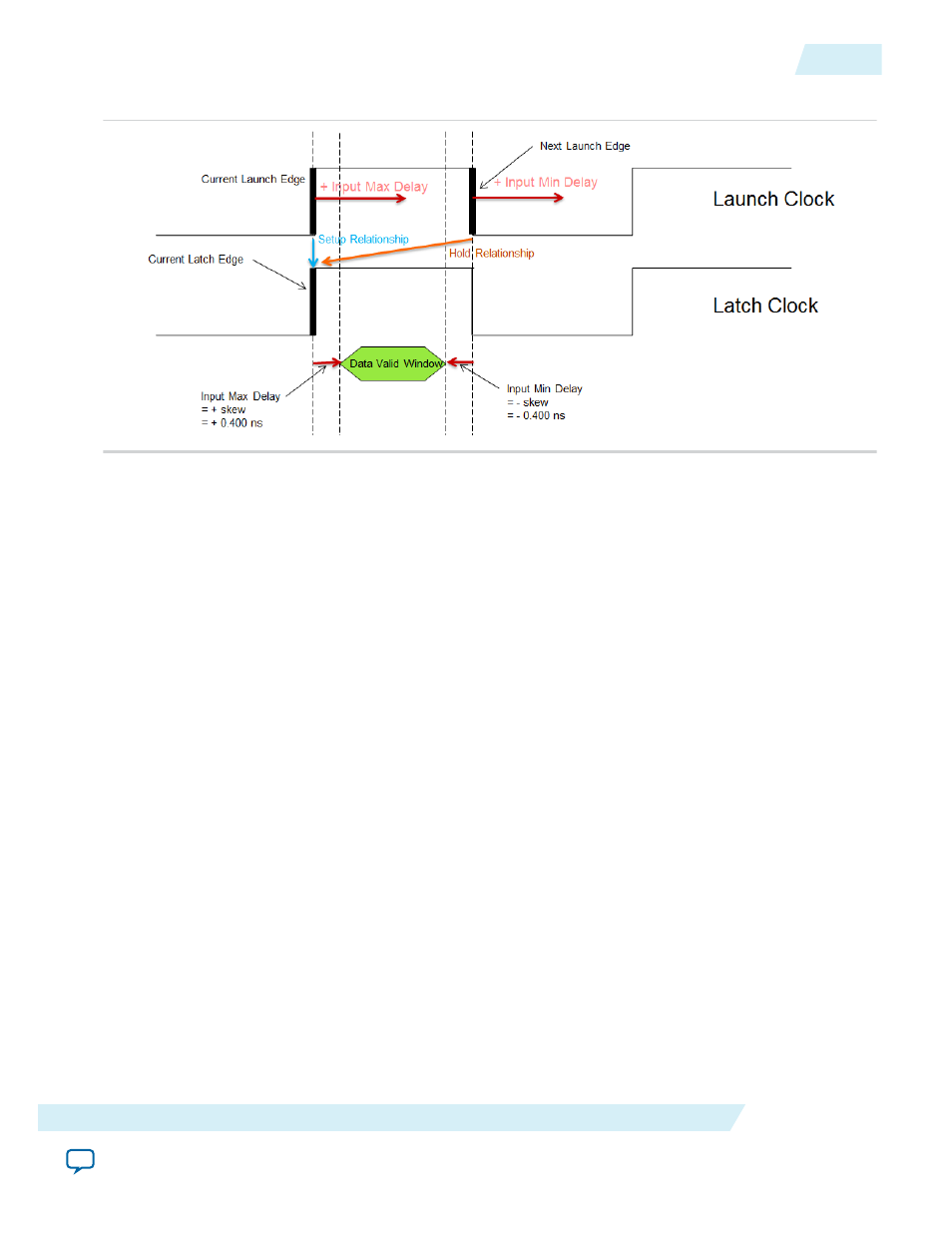Analyzing same edge transfer – Altera ALTDQ_DQS2 User Manual
Page 93

Figure 66:
Analyzing Same Edge Transfer
The following
set_false_path
commands ensure that you are analyzing only the same edge transfers, by
removing the opposite edge transfers.
Note: These assignments are optional.
Example 8: set_false_path Commands
set_false_path -setup -rise_from [get_clocks {virtual_dqs_in}] -fall_to
[get_clocks {dqs_in}]
set_false_path -setup -fall_from [get_clocks {virtual_dqs_in}] -rise_to
[get_clocks {dqs_in}]
set_false_path -hold -rise_from [get_clocks {virtual_dqs_in}] -rise_to
[get_clocks {dqs_in}]
set_false_path -hold -fall_from [get_clocks {virtual_dqs_in}] -fall_to
[get_clocks {dqs_in}]
The default setup relationship is to latch data on the next edge. The following
set_multicycle_path
commands direct the TimeQuest Timing Analyzer to analyze the paths as
a same-edge transfer, whereby the same edge that launches data is going to latch it. The reason it
is latched on the same edge is that latch edge will be delayed by the DQS circuitry (hardened 90°
in this design example) into the middle of the data eye.
Example 9: set_multicycle_path Commands
set_multicycle_path -rise_from [get_clocks {virtual_dqs_in}] -rise_to
[get_clocks {dqs_in}] -setup -end 0
set_multicycle_path -fall_from [get_clocks {virtual_dqs_in}] -fall_to
[get_clocks {dqs_in}] -setup -end 0
UG-01089
2014.12.17
Analyzing Same Edge Transfer
93
ALTDQ_DQS2 IP Core User Guide
Altera Corporation
